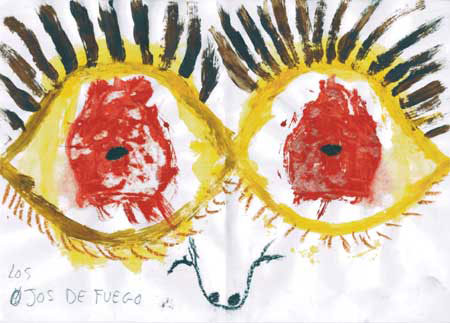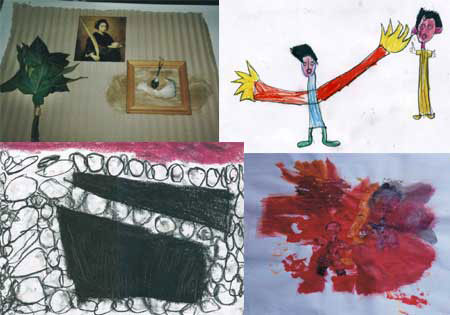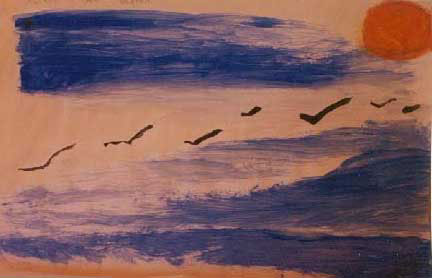ART THERAPY: REALIZATION OF WORKSHOPS IN DIFFERENT SOCIAL, CLINICAL, EDUCATIONAL AND CULTURAL FIELDS
|
Description |
Art Therapy is a discipline that empowers human help using art media, images, the creative process and the patient's responses to those created products. Through the creative process is reflected on the development of the patient, their personal conflicts and interests. Art Therapy is a discipline that empowers human help using art media, images, the creative process and the patient's responses to those products created. Through the creative process is reflected on the development of the patient, their personal conflicts and interests.
The practice of Art Therapy is based on the knowledge of human development and psychological theories, which are put into practice through different therapeutic means such as educational, cognitive, psychodynamic and others, with the aim of helping in cases of emotional, psychic and social conflicts, self-esteem, personal and family disruption and other social and psychological problems, trauma and post-traumatic stress, as well as enhancing social inclusion.

"Fire Eyes". Shelter of abused women
|
How does it work |
The objectives of the research through the workshops are:
• Work with art as a vehicle for social, physical, psychic and personal improvement.
• Use art as an instrument of growth and personal improvement and as a means of integration and development.
• Intervene in the empowerment of diverse capacities of people of different types, as well as in social and psychological disorders, for their intervention through art.
The scope of application is very broad, since the therapeutic use of art can be applied both in those centers dedicated to sensory, psychic, physical and social diversities, as well as in hospitals that treat different psychopathologies.

Examples of art therapy
Thus, the Art Therapy has been used for decades in other countries to intervene in the following needs:
• Sensory diversity (visual and auditory).
• Physical and motor diversity.
• Psychic diversity (Psychopathological, Down syndrome ...).
• Social diversity (difficulty adapting for different reasons, problems resulting from immigration, etc.)
• Refugees.
• Trauma.
• Addictions (drug addiction, alcoholism, gambling).
• Eating disorders and body image (anorexia and bulimia).
• Hospice care.
• Abused women and children.
• Inmates.
• Support courses to affirm self-esteem, stress and many other areas.
The art therapy is currently being applied in Hospitals of the Community of Madrid, such as La Paz Hospital, Infanta Leonor, Ramón y Cajal or 12 de Octubre.
Material Needs: Therapy Art Workshops Need
• A space for art workshop, bright, with access to water and pools, and storage shelves for artistic material.
• Artistic materials: tempera, wax, acrylics, brushes, clay, continuous paper and DIN A3.
• Camera and video.
Human needs: Therapy art workshops can be individual, meeting the needs of a single person, or group, with a maximum of six/eight people per group. Each workshop needs an art therapist, with a higher degree and specialization.
Development: The sessions usually consist of three parts:
• Creative unlock.
• Artistic proposal and its plastic development.
• Verbal sharing between the participants and the art therapist.
The art-therapist takes a personalized follow-up of each of the participants. At the beginning of the workshop a commitment of confidentiality between therapist and participants is signed and the works are kept under the supervision of the workshop. At the end of the workshop, whenever the participants agree, an exhibition of the works is possible. In the case of children's hospitals, bed-to-bed sessions are held in cases where the child cannot participate in group sessions.

Work done at a Mental Health Day Center
|
Advantages |
Unlike other verbal therapies, the use of visual and non-logocentric means can help unlock individual arrangements.
Art therapy is a new discipline in Spain, offering a distinctive way of approaching psychic, social and affective problems, using creativity and artistic creation (drawing, painting, collage, modeling, photography, etc.) as a way of approach and help patients/clients face their situation. In Alzheimer's patients, it can help improve their life situation.
|
Where has it been developed |
The members of the research group, and its director Marián López Fernández Cao, are in turn the part of the professorate of the Master of Art Therapy of the Universidad Complutense de Madrid.
|
And also |
The research group has carried out the following projects:
• The European project with the title Ariadne, for the integration of migrants through art;
• The European project Divercity, introducing diversity in museums and city;
• Musacces, accessibility in museums
• I + d ALETHEIA, Art, Art therapy, Trauma and emotional memory.
|
Contact |
|
© Office for the Transfer of Research Results – UCM |
|
PDF Downloads |
|
Classification |
|
Responsible Researcher |
Marian López Fernández Cao: asevrrii@ucm.es
Department: Didactics of Plastic Expression
Faculty: Education


